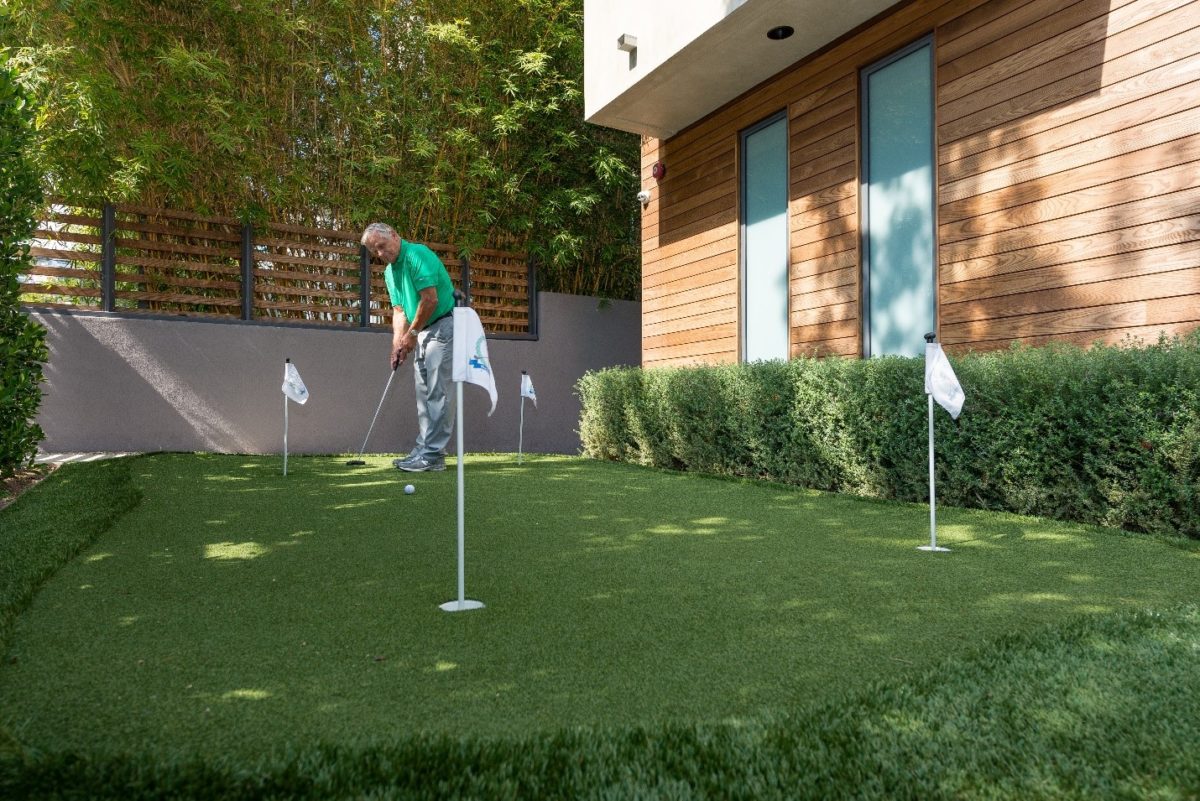- BACKYARD
- COMMERCIAL
- ENVIRONMENT
- FIELD TURF NEWS
- GOLF
- MAINTENANCE
- NEWS
- PETS
- POOL
- RESIDENTIAL
- TURF TIPS
How Do I Make My Grass a Putting Green? A Step-by-Step Guide

Golf is not just a pastime for the retired, there are many players of all age groups that enjoy a good game of golf. Having access to a good golf course is essential for enjoying the hobby, but not everybody has the time to visit the greens in order to better their game. For those with a nice back lawn, however, creating a putting green for the home is a great idea. If you are interested in setting up a putting green, then below is a step-by-step guide on how to proceed. If you choose artificial turf, then FieldTurf Landscape is here to help.
Putting Greens
Putting greens have very specific requirements. If you want a USGA rated putting green, the grass cannot be longer than 0.125”. This requirement is tough for those looking to make putting greens for the home. A standard lawn mower cannot cut this low. This means, if you are going to install a natural grass putting green, you need to be comfortable with purchasing a rotary or cylinder lawnmower specifically for your green – if you are set on regulation play. Going natural can be difficult though, and could ruin your lawn, which is why artificial turf is often recommended by landscapers and golf enthusiasts alike.
A Step-By-Step Guide:
Choosing the Area
Your first step is to choose the right area for your putting green. An area of your lawn that is very level will reduce work later, and good drainage is a necessity to avoid puddling in wet weather. Avoid any hills or steep slopes.
Start Digging
You will need to remove the current grass on the lawn in the area you want to transform into a putting green for your home. You’ll need to dig down 10-12 inches, and at this point you can add some contours, but no more than a 2.5% slope.
Install Drainage
Drainage is the most important part of a green, especially if you are going for natural grass. Soggy putting greens can be damaged easily, so 4” perforated drainage pipes are ideal (in a herringbone pattern and covered in pea gravel).
Adding Golf Grade Sand
Sand is the first layer in the hole. Add enough sand to get the right depth, then rake it to level out the sand as much as possible. When creating putting greens for your home, sand is an affordable and easy way to get the best drainage.
Seed or Sod It
Using sod is generally the easier method if you are doing natural grass. Seeding natural grass, however, will be better in the long run, and you will want to use USGA regulation grass types. For natural grass, you will need to fertilize and water regularly and cut the lawn every other day to keep it at 0.125 inches. After 4-5 weeks you’ll be able to use a hole puncher and start practicing your game. If you are looking for the lowest maintenance option, artificial turf is a faster, more affordable and easier path.
Putting Greens for Your Home
If you are interested in installing putting greens for your home and want a lower maintenance lawn, contact us today at FieldTurf Landscape to learn about the options.


